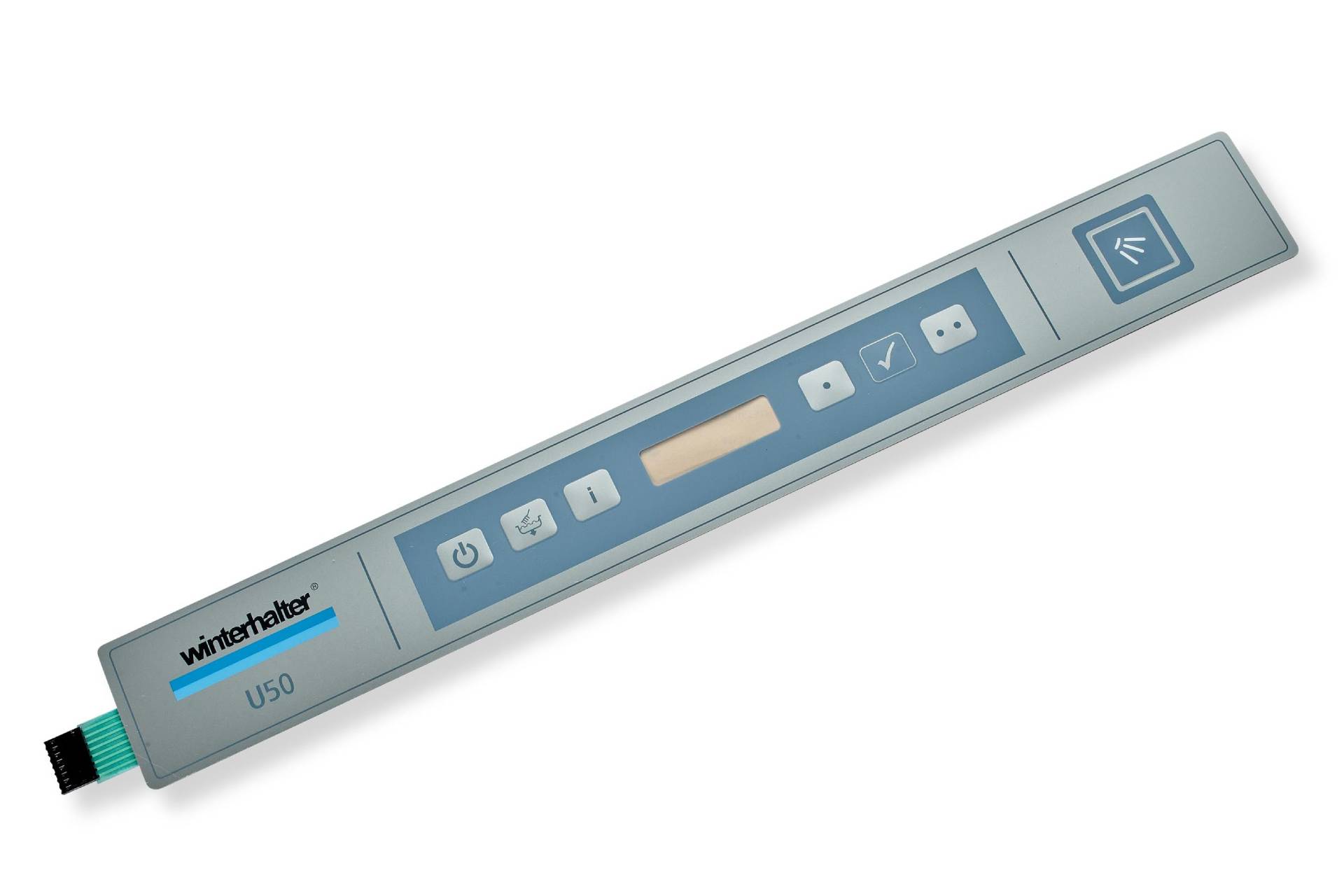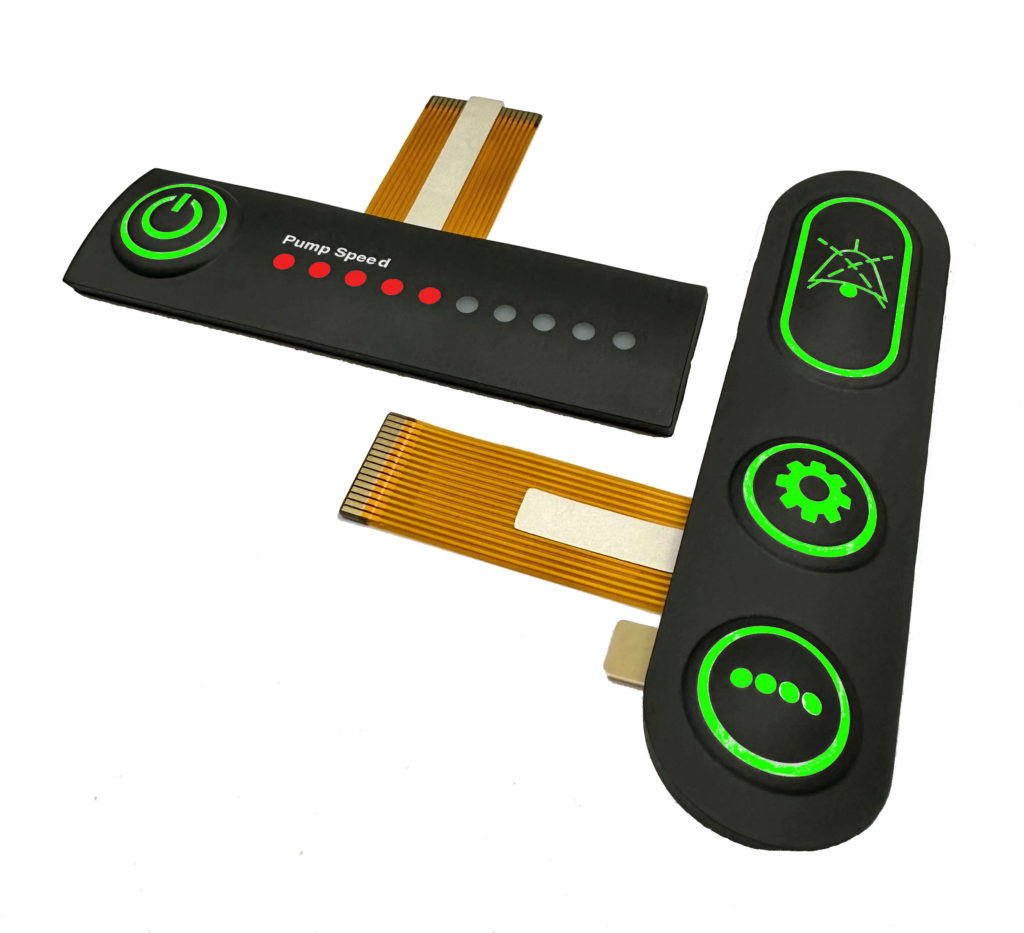Switch Backlighting and Accessibility: A Revolution for Diverse Users
Recognizing the Benefits and Importance of Switch Backlighting in Individual User Interfaces
Switch backlighting acts as an essential component in interface style. It improves presence, particularly in poorly lit environments, and aids in the navigating of tools for all customers. This attribute not just promotes individual self-confidence yet likewise promotes inclusivity for those with visual disabilities. As innovation advances, the effects of switch backlighting remain to broaden. Understanding its multifaceted advantages might reveal deeper understandings right into its role in modern-day gadget interaction.
The Duty of Switch Backlighting in Interface
Switch backlighting serves an essential feature in individual interfaces, enhancing both functionality and availability. It supplies aesthetic feedback to users, showing the condition and functionality of different controls. This attribute helps users rapidly determine energetic or non-active switches, promoting effective interaction. By illuminating the controls, backlighting lowers the probability of errors, as customers can easily recognize their options.
In addition, Switch backlighting adds to a natural design visual, typically integrating flawlessly into the total look of the interface. It allows developers to create user-friendly experiences that guide individuals via complicated systems. Furthermore, backlighting can be tailored, enabling makers to align colors and strengths with brand identifications, further improving customer engagement.
In settings where user attention is split, the clearness provided by switch backlighting comes to be a lot more substantial. Generally, this attribute plays an essential role in guaranteeing that individual interfaces are both aesthetically attractive and functional.
Enhancing Exposure in Low-Light Issues
Just how can individual interfaces successfully maintain capability in low-light conditions? One important technique is via the implementation of switch backlighting. This attribute enhances the presence of controls and indicators in dim environments, making sure individuals can engage with gadgets without stressing their eyes or presuming the capability of numerous components. By brightening buttons, backlighting supplies a clear visual hint, lowering mistakes and enhancing user confidence when maneuvering via user interfaces.

In addition, the critical use color and intensity in backlighting can assist individuals in distinguishing between different features and conditions, further boosting functionality. Reliable backlighting not just adds to a cosmetically pleasing style but additionally promotes security, particularly in circumstances where quick actions are essential. Finally, switch backlighting is an important element that considerably enhances presence and functionality of customer interfaces in low-light conditions, helping with a smooth individual experience.
Improving Availability for All Users
Improving availability in interface involves boosting aesthetic quality to fit diverse customer demands. Efficient backlighting not only benefits nighttime functionality however also plays a vital duty in ensuring adequate color contrast for those with visual disabilities. By focusing on these elements, designers can produce extra user-friendly and comprehensive atmospheres for all individuals.

Boosted Aesthetic Clearness
Clarity in visual style plays a vital duty in ensuring that interface come to everybody, no matter of their abilities. Switch backlighting significantly boosts aesthetic clearness by providing clear aesthetic signs that lead users in communicating with interface components. This feature is specifically useful for people with aesthetic impairments, as it helps them compare various controls and their states. Backlighting can decrease cognitive tons by making information simpler to refine. Customers can swiftly determine active switches or switches, assisting in smoother navigating and interaction. By including switch backlighting, designers advertise inclusivity and usability, enabling all customers to engage with modern technology effectively. Inevitably, enhanced visual quality with backlighting fosters a more user-friendly experience throughout diverse user groups.
Evening Functionality Perks
Switch backlighting not only boosts aesthetic clarity yet likewise provides significant benefits for nighttime functionality, making interfaces more easily accessible for all customers. This feature is specifically helpful in low-light atmospheres, where traditional screens may be illegible. The illumination given by backlit switches permits customers to interact with devices without straining their eyes or disrupting their environments. Additionally, it supports users with visual problems by offering necessary add dark settings. Because of this, switch backlighting contributes to an extra inclusive experience, fitting differing levels of visual capability and guaranteeing that all customers can navigate user interfaces successfully, no matter the time of day. Eventually, this performance fosters a more easy to use environment for everyone.
Shade Comparison Considerations
Color contrast plays a crucial duty in enhancing access within user interfaces. High-contrast styles assure that users, including those with visual disabilities and shade blindness, can easily identify in between different elements. This is specifically crucial for switch backlighting, as efficient contrast aids individuals identify energetic versus inactive states of switches. Implementing ideal shade combinations-- such as light text on dark histories or vice versa-- enhances readability and individual experience. Furthermore, adherence to developed comparison proportion guidelines, such as the Web Content Availability Standards (WCAG), cultivates inclusivity. By focusing on shade comparison, designers can create interfaces that suit varied customers, permitting more reliable and intuitive communication with technology. Ultimately, thoughtful shade choices boost use for all people, promoting a comprehensive electronic environment.
Creating an Immersive Gaming Experience
In the domain name of pc gaming, improved visual signs can significantly boost player engagement and communication with the environment. By using vibrant environment development via switch backlighting, programmers can craft immersive experiences that reply to in-game actions. This assimilation not only mesmerizes gamers however likewise deepens their emotional connection to the video game globe.
Boosted Visual Cues
Improved visual signs play an important role in developing an immersive gaming experience, enabling gamers to involve even more deeply with the virtual atmosphere. Switch backlighting can enhance these hints by illuminating controls, making them easily recognizable during gameplay. This attribute not only help in navigation but additionally reinforces the thematic and emotional elements of the game. As an example, different shades or strengths can signify various activities or states, providing instant comments to gamers. Such aesthetic indications can improve situational recognition, helping gamers make fast choices. Additionally, backlighting can add to the general aesthetic, balancing with the video game's design and narrative. This way, improved visual hints elevate player experience, cultivating a stronger link to Home Page the game globe.
Dynamic Environment Creation
Switch backlighting not just boosts visual signs yet also plays a substantial duty in vibrant environment creation within video gaming atmospheres. By adjusting to in-game occasions, these illuminated switches can boost the overall immersion and psychological effect of gameplay. Throughout intense fights, red backlighting may increase stress, while comforting blue shades can develop a feeling of calm throughout exploration phases. This receptive illumination adds to a much more appealing user experience, enabling players to really feel even more connected to their digital surroundings. In addition, adjustable backlighting options make it possible for players to individualize their interfaces, better enriching their video gaming experience. This way, switch backlighting functions as an effective tool for developers intending to craft immersive and memorable gaming atmospheres.
Enhancing Use for Everyday Tools
As modern technology remains to permeate day-to-day live, the relevance of intuitive interface becomes progressively clear. Switch backlighting functions as a critical attribute that boosts functionality throughout various day-to-day gadgets, such as remote controls, devices, and smartphones (Switch Backlighting). By lighting up controls, backlighting aids individuals promptly identify and operate features, particularly in low-light problems. This not only lowers stress however additionally lessens errors, therefore improving general customer complete satisfaction
Backlighting can provide visual comments, indicating whether a gadget is powered on or off. This attribute is particularly helpful for users with visual problems, as it makes controls extra available. In atmospheres where check my site quick action times are important, such as kitchen areas or workplaces, well-designed backlighting can considerably streamline communications. Inevitably, integrating switch backlighting into everyday devices fosters a more user-friendly experience, emphasizing the demand for thoughtful design in modern technology that seamlessly incorporates right into everyday routines.
Style Considerations for Efficient Backlighting
Reliable backlighting design needs cautious factor to consider of numerous elements to assure ideal usability. One crucial aspect is the intensity of the backlighting; it needs to be bright adequate to enhance visibility without creating glow or eye stress. Shade temperature also plays an essential role; warmer tones can create a more welcoming environment, while cooler tones may boost emphasis and awareness.

User choices and environmental factors, such as ambient light degrees, should likewise inform backlighting design. Personalization options can boost the customer experience, enabling people to readjust brightness or shade settings to see this site suit their needs. By dealing with these components, designers can produce efficient backlighting that significantly boosts interface usability.
Future Trends in Switch Backlighting Modern Technology
With advancements in technology, the future of switch backlighting is poised for significant evolution. Arising fads indicate a shift towards adjustable backlighting systems that allow individuals to change shade, brightness, and patterns according to situational demands or individual preferences. This adaptability improves the user experience by offering a much more instinctive user interface.
Furthermore, integration with wise home systems is anticipated, making it possible for buttons to respond dynamically to environmental aspects such as ambient light or customer task. In addition, energy-efficient LED innovation will certainly remain to dominate, offering longer lifespans and lowered power consumption.
Developments in materials scientific research may additionally result in innovative designs, such as clear or flexible backlighting alternatives that can be embedded into different surfaces perfectly. As interface become significantly innovative, the demand for sophisticated switch backlighting options will drive ongoing r & d in the field, making certain that functionality and aesthetic appeals evolve in tandem.
Regularly Asked Questions
Exactly How Does Switch Backlighting Impact Battery Life in Gadgets?
Switch backlighting can substantially affect battery life in gadgets. When triggered, it eats added power, potentially decreasing general battery long life. On the other hand, efficient backlighting technology might decrease this drain, stabilizing visibility and power preservation properly.
Are There Different Kinds Of Switch Backlighting Technologies?
Numerous switch backlighting technologies exist, including LED, OLED, and optical fiber. Each technology offers unique benefits relating to brightness, energy efficiency, and design adaptability, dealing with various customer preferences and device requirements.
Can Switch Backlighting Be Customized by Customers?
Switch backlighting can without a doubt be personalized by customers, permitting personalized lighting results, colors, and illumination degrees (Switch Backlighting). This versatility improves individual experience, dealing with individual choices and boosting access in numerous lighting conditions
What Materials Are Commonly Made Use Of for Switch Backlighting?
Common materials utilized for switch backlighting include LEDs for lighting, acrylic or polycarbonate for diffusing light, and numerous plastics for real estate. These materials assure sturdiness, reliable light circulation, and enhance visual appeal in customer interfaces.
How Does Switch Backlighting Influence the General Style Aesthetic?
Switch backlighting substantially affects total layout aesthetic by boosting visual allure, developing climatic impacts, and guaranteeing capability in low-light conditions. It enables designers to integrate innovation perfectly into settings, elevating both style and individual experience.
Switch backlighting serves as a crucial element in individual interface layout. Switch backlighting serves a vital function in customer interfaces, boosting both use and accessibility. Switch backlighting considerably improves aesthetic quality by providing clear visual signs that direct customers in communicating with user interface elements. Switch backlighting not just boosts aesthetic clarity but additionally supplies considerable benefits for nighttime usability, making user interfaces much more easily accessible for all customers. As a result, switch backlighting contributes to a more inclusive experience, suiting varying levels of aesthetic capability and making sure that all individuals can navigate interfaces effectively, no matter of the time of day.